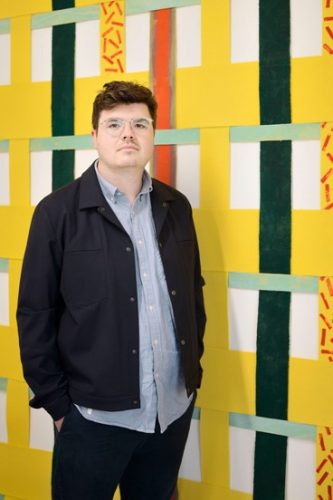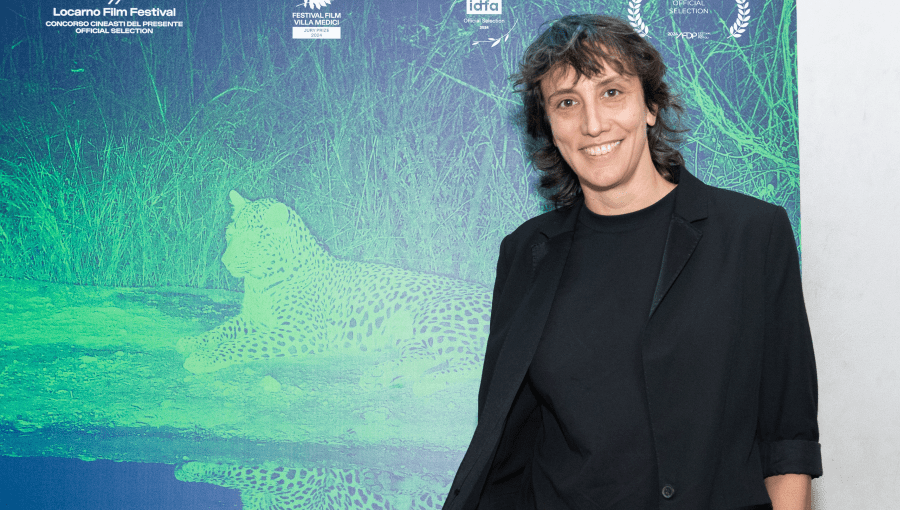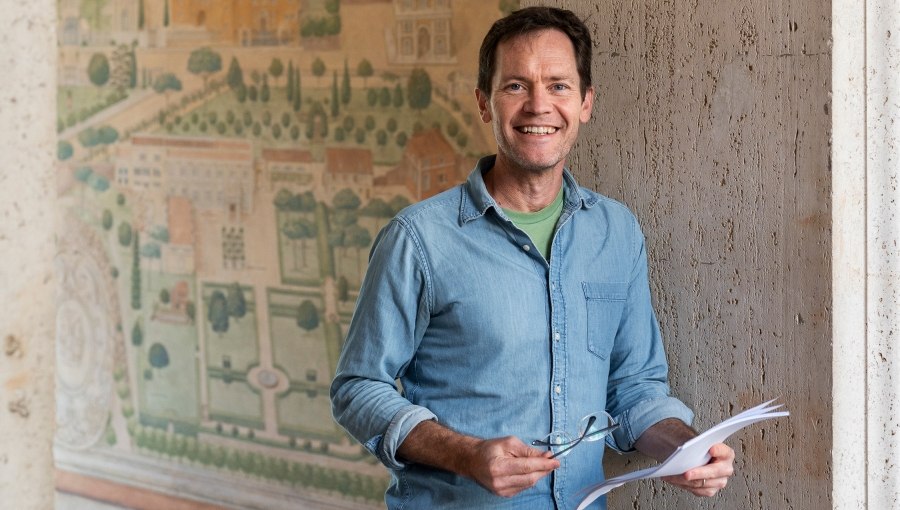Meet Professor James Gardner, Chair of New Art and Design Department
Studio Art Professor James Gardner has recently been appointed Chair of the new Art and Design Department at JCU. In 2018, Professor Gardner was named one of London’s Apollo magazine’s “40 under 40 in the Art World.” He has been working at JCU since 2019, and he will be teaching Introduction to Printmaking, Painting, Foundation in 3D Art and Design, and Experimental Drawing in Fall 2022.

James Gardner
Tell us about your background.
Having studied Design in the UK, I found myself gravitating towards a more interdisciplinary approach through experimenting with Fine Art Textiles and Installation. While working in Design as a colorist in London, I became interested in connecting the worlds of Fine Art and Design. In 2012, I moved to Rome and opened a gallery centered on the relationship between display, craft, and contemporary art practices. Collaborating with a community of young artists here—both local and international—developed my interest in education. Many of the exhibitions I curated had educational components, and I worked with several colleges and universities in Italy and the UK to develop workshops based on the exhibition program. I was fortunate to get to know JCU students as interns and as part of the art community at large. I sought a way to cultivate this creative ecosystem, expanding beyond the gallery. When a full-time position opened at JCU in 2019, it was a logical step to continue my inquiry into artistic practice as pedagogical method and promote Rome as a city amenable to emerging artists.
Congratulations on being appointed Chair of the new Art and Design Department. What are your plans for the department? Where do you see it in 10 years?
Thank you! I am looking forward to further developing the department, in collaboration with other departments, faculty, and staff, as a hub for nurturing creativity in the JCU community. My aim is to deepen involvement with the local art ecosystem, creating more opportunities for dialog between students, their work, and the art world of Rome, while also promoting an international perspective. Other important goals are expanding the program in terms of facilities and gaining access to equipment and technologies.
In ten years, I envision the department among the best English-speaking programs for Art and Design in Italy, attracting both international and local students. The program is becoming truly embedded within the community, through artist residencies, workshops, and exhibition opportunities. We are fortunate to already have internationally recognized artists and designers as faculty members, which allows students to build relationships with working practitioners within various disciplines. As the department grows, I foresee further expansion of the roster for an increasingly diverse, dynamic, and engaging faculty.
What challenges do you foresee in your new role?
The biggest challenge is making the most of such an expansive opportunity! Many people have preconceived ideas about art, which I hope to interrogate. One aim is for the department to serve both students and faculty from other disciplines by deepening their understanding of the cross-disciplinary potential which lies in studying methods and practices for Art and Design.
What programs and activities does the department offer? Do you plan to develop additional ones?
The Art & Design Minor is already one of the most popular at JCU, and classes in various disciplines are also available to interested students. Some of our recently added courses include Printmaking, Editorial Design, and Textiles, with more to come soon. Students also have opportunities to exhibit work at the end of the semester and participate in critique sessions with visiting artists.
This Fall, in collaboration with Student Services, students will have the opportunity to travel to the Venice Biennale with the department. Working with the Art and Design Club to broaden the extracurricular activity offering is a priority. In the future, exhibition-making will become an even more intrinsic aspect of the program, moving away from the convention of a single final show. I want to encourage students to continually test their work through independent experimentation and display.
What are the advantages of earning a minor in Art and Design at JCU?
The program is very open and flexible, giving students the opportunity to experiment and explore as they learn technical art skills. Creative thinking, idea development, research through making, and problem solving all compliment the other majors offered at JCU. I feel anyone can benefit from studying art, not just those pursuing a creative career.
The breadth of experience available and the unique context of Rome are two things that set JCU apart. Students can move between diverse disciplines, for example, from darkroom photography to laser-cutting, to develop a truly individual practice. The department also places Art and Design within the larger liberal arts context, encouraging students to bring ideas from other coursework into the studio to cross-pollinate between diverse theories, practices, and disciplines.
What advice would you give to aspiring artists?
I think it’s very important to spend time researching and understanding how you want to position yourself as an artist in terms of practice and theory. There’s no singular path to becoming an artist, so be open to other fields and disciplines. It’s also vital to develop a community and collaborate with peers, especially when it comes to things like DIY exhibitions or sharing a studio space.





